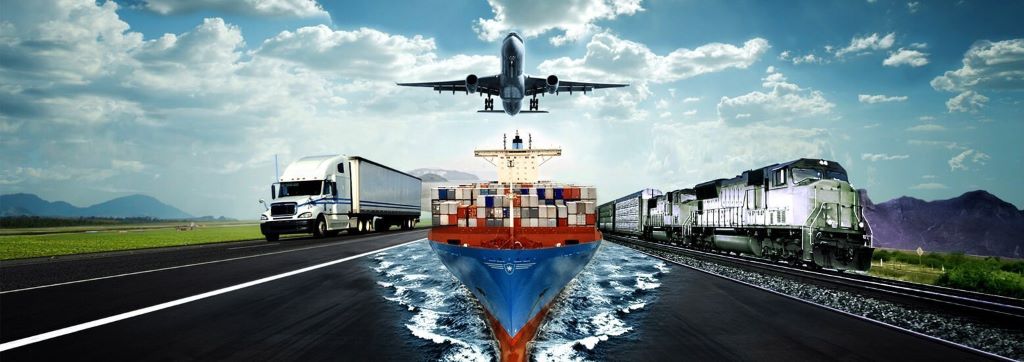Have you ever stopped to consider how people and goods travel from one place to another? The world of transportation is vast, encompassing various methods that cater to different needs and circumstances. In this article, we’re going to delve into the five most common modes of transportation, each offering its unique advantages and disadvantages. So, whether you’re a curious traveler or someone interested in the logistics of moving goods, let’s embark on this informative journey together. This article is presented by Localvaluemagazine.com.
1. Roadways Transportation: Navigating the Flexible Path
When we think of transportation, the image of vehicles cruising down roads often comes to mind. Roadways transportation involves the use of motor vehicles like cars, lorries, buses, bicycles, and trucks to move people and goods. What sets road transport apart is its unparalleled flexibility. Unlike other modes, it can take you from point A to point B without the need for specific infrastructure. Road transport is also relatively cost-effective, making it a preferred choice for short to medium distances.
However, modern transport solutions have been developed to address the challenges of road transport. Traffic congestion, accidents, and varying road conditions can affect travel time and safety. Despite these hurdles, road transport remains a vital component of our daily lives, offering convenience and accessibility that other modes may struggle to provide.
2. Railways Transportation: On the Track to Efficiency
For heavy and bulk transportation, railways have been a go-to mode for decades. Trains, with their massive cargo capacities, are ideal for moving substantial products over long distances. Rail transport is commonly used in conjunction with road and maritime transportation to create a seamless supply chain.
The efficiency of railways lies in their ability to move significant quantities at once, reducing overall transportation costs. However, they are limited by fixed tracks and infrastructure. This limitation makes railways most effective when transporting goods between established hubs, often requiring road transport for the first and last legs of the journey.
3. Water Transportation: Navigating the High Seas
Imagine transporting goods and people across vast oceans and navigable rivers. Water transportation, through the use of ships and boats, accomplishes just that. This mode is especially valuable for transporting large volumes of goods over extended distances.
The primary advantage of water transport is its cost-effectiveness for long-haul journeys. Ships can carry massive quantities, reducing the need for frequent trips. However, water transport is relatively slow compared to other modes, and it requires suitable ports and harbors for loading and unloading. Despite these limitations, it remains an essential mode for global trade and travel.
4. Air Transportation: Soaring Through the Skies
In a world where speed is of the essence, air transportation takes the lead. Airplanes provide a rapid way to transport people and goods, making them indispensable for urgent deliveries and long distances. The convenience and efficiency of air transport have revolutionized the way we connect with the world.
Speed aside, air transport has its drawbacks. It is relatively expensive compared to other modes, and it’s not as environmentally friendly due to high fuel consumption. Additionally, air travel requires extensive infrastructure, including airports and air traffic control systems. Despite these challenges, air transport remains a vital link in the global transportation network.
5. Pipeline Transportation: The Silent Movers
When it comes to transporting liquids and gases, pipelines take center stage. Pipelines offer a safe and efficient means of moving substances like oil, gas, and even water over long distances. They’re often hidden beneath the ground, quietly facilitating the movement of resources.
Pipelines excel in safety and consistency, reducing the risks associated with other modes of transportation. However, they lack the versatility of modes like road and rail since they are fixed in place. Pipelines are most effective when transporting resources between specific points, such as oil fields and refineries.
Choosing the Right Path: Factors to Consider
Each mode of transportation presents a unique set of benefits and challenges. The choice of mode depends on factors such as the nature of the goods, distance, urgency, and cost considerations. For instance, if you need to transport perishable goods quickly, air transport might be the best choice despite the higher cost. On the other hand, if you’re moving bulk commodities over long distances, water or rail transport could offer the most economical solution.
Conclusion
In a world constantly on the move, transportation is the backbone that keeps economies and societies functioning. Effortlessly plan your trip, leveraging the flexibility of road transport, efficiency of railways, vastness of waterways, speed of air travel, and reliability of pipelines that shape our interconnected world.
Next time you see a truck on the highway or a plane soaring overhead, remember the intricate network of transportation that makes it all possible. By understanding the strengths and limitations of each mode, we can make more informed choices and contribute to the smoother flow of goods and people around the globe.
Frequently Asked Questions
- Which mode of transportation is the fastest?
Air transportation is the fastest mode of transportation, making it ideal for urgent deliveries and long distances.
- What is the most cost-effective mode for transporting bulk goods?
Railways transportation is the most cost-effective mode for moving bulk commodities over long distances.
- Are pipelines environmentally friendly?
Pipelines are safer and more environmentally friendly compared to other modes like road or air transport due to reduced emissions and risks.
- Can water transportation accommodate urgent deliveries?
Water transportation is relatively slower, making it less suitable for urgent deliveries compared to air or road transport.
- How do I choose the right mode of transportation for my goods?
Consider factors like the type of goods, distance, urgency, and cost to determine the most suitable mode of transportation for your needs.






